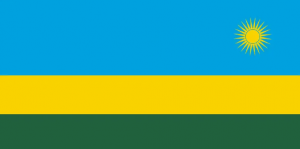Language/Kinyarwanda/Grammar/Plurals
Hi Kinyarwanda learners!😊
Learning Kinyarwanda Grammar can be a challenging task, but it is also an incredibly rewarding one. With the right approach and dedication, you can master the language in no time!
Introduction
In this lesson, we will be looking at the rules for forming plurals in Kinyarwanda. We will look at the different ways to form plurals, as well as some examples of how they are used in sentences.
What is a Plural?
A plural is a grammatical form that refers to more than one person or thing. In English, we usually add an 's' to the end of a word to make it plural. For example, the word 'cat' becomes 'cats' when it is plural.
In Kinyarwanda, there are several different ways to form plurals. Let's take a look at them.
Forming Plurals
Adding -zi
The most common way to form plurals in Kinyarwanda is by adding the suffix -zi to the end of the word. This is similar to the English 's' ending. For example:
- umugabo (man) becomes abagabo (men)
- umugore (woman) becomes abagore (women)
- umwana (child) becomes abana (children)
Adding -a
Another way to form plurals in Kinyarwanda is by adding the suffix -a to the end of the word. This is similar to the English 'es' ending. For example:
- umuco (house) becomes amaco (houses)
- umutwe (tree) becomes amatwe (trees)
- umusozi (person) becomes amasozi (people)
Adding -i
The last way to form plurals in Kinyarwanda is by adding the suffix -i to the end of the word. This is similar to the English 'ies' ending. For example:
- umubiri (dog) becomes abibiri (dogs)
- umukono (hand) becomes abikono (hands)
- umuriro (mountain) becomes abiriro (mountains)
Examples
Now let's look at some examples of how these plurals are used in sentences.
- Abagabo bahora bakomeza kureba. (The men are starting to read.)
- Amaco yose yahise yarangiye. (All the houses were painted.)
- Abibiri bahise bakora ibyaha. (The dogs were barking.)
Conclusion
In this lesson, we have looked at the different ways to form plurals in Kinyarwanda. We have seen that there are three main ways to form plurals: by adding -zi, -a, or -i to the end of the word. We have also seen some examples of how these plurals are used in sentences.
If you want to improve your Kinyarwanda Grammar, you can also use the Polyglot Club website. Find native speakers and ask them any questions!
If you have any questions, please ask them in the comments section below.
Feel free to edit this wiki page if you think it can be improved. 😎

